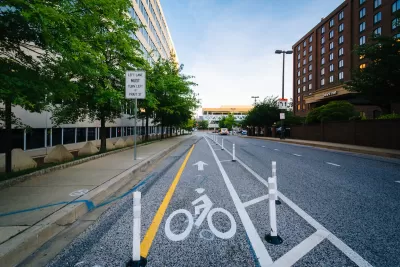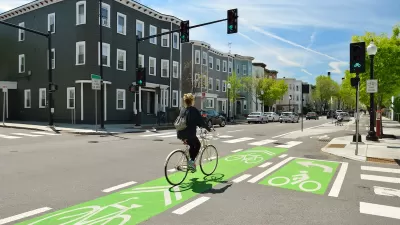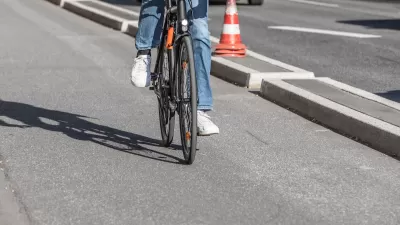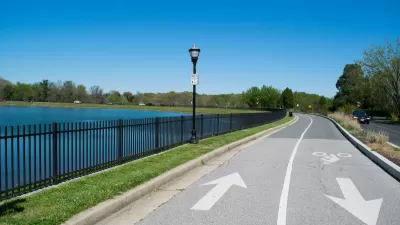Projects on roadways maintained by the state DOT will have to comply with Complete Streets requirements as part of a broader effort to reduce traffic deaths in the state.

The Maryland Department of Transportation (MDOT) issued a new, department-wide Complete Streets policy, signaling a renewed commitment to improving road safety for pedestrians and cyclists.
According to an announcement from MDOT, “the Complete Streets policy will ensure MDOT’s multi-billion-dollar capital program funds safe, complete streets for all Marylanders.”
Complete Streets requirements will apply to capital improvement projects, new or reconstructed streets connecting to MDOT rights-of-way, and “When there is an opportunity to improve safety for all users by applying proactive engineering safety countermeasures to resurfacing projects.”
The policy requires each MDOT mode or transportation type to develop strategies for implementation within the next six months “with the goal of increasing equitable access to the transportation network — from better transit connections to safer crossings.” It also focuses on driver education and traffic enforcement.
The statement notes, “The policy applies to new projects and is not retroactive for ones that have achieved 30% or more design and approval pursuant to the National Environmental Policy Act (NEPA) or that will achieve those milestones by December 1.”
FULL STORY: Maryland Transportation Secretary Wiedefeld Implements New Statewide Complete Streets Policy

Alabama: Trump Terminates Settlements for Black Communities Harmed By Raw Sewage
Trump deemed the landmark civil rights agreement “illegal DEI and environmental justice policy.”

Study: Maui’s Plan to Convert Vacation Rentals to Long-Term Housing Could Cause Nearly $1 Billion Economic Loss
The plan would reduce visitor accommodation by 25% resulting in 1,900 jobs lost.

Why Should We Subsidize Public Transportation?
Many public transit agencies face financial stress due to rising costs, declining fare revenue, and declining subsidies. Transit advocates must provide a strong business case for increasing public transit funding.

Paris Bike Boom Leads to Steep Drop in Air Pollution
The French city’s air quality has improved dramatically in the past 20 years, coinciding with a growth in cycling.

Why Housing Costs More to Build in California Than in Texas
Hard costs like labor and materials combined with ‘soft’ costs such as permitting make building in the San Francisco Bay Area almost three times as costly as in Texas cities.

San Diego County Sees a Rise in Urban Coyotes
San Diego County experiences a rise in urban coyotes, as sightings become prevalent throughout its urban neighbourhoods and surrounding areas.
Urban Design for Planners 1: Software Tools
This six-course series explores essential urban design concepts using open source software and equips planners with the tools they need to participate fully in the urban design process.
Planning for Universal Design
Learn the tools for implementing Universal Design in planning regulations.
Smith Gee Studio
Alamo Area Metropolitan Planning Organization
City of Santa Clarita
Institute for Housing and Urban Development Studies (IHS)
City of Grandview
Harvard GSD Executive Education
Toledo-Lucas County Plan Commissions
Salt Lake City
NYU Wagner Graduate School of Public Service





























